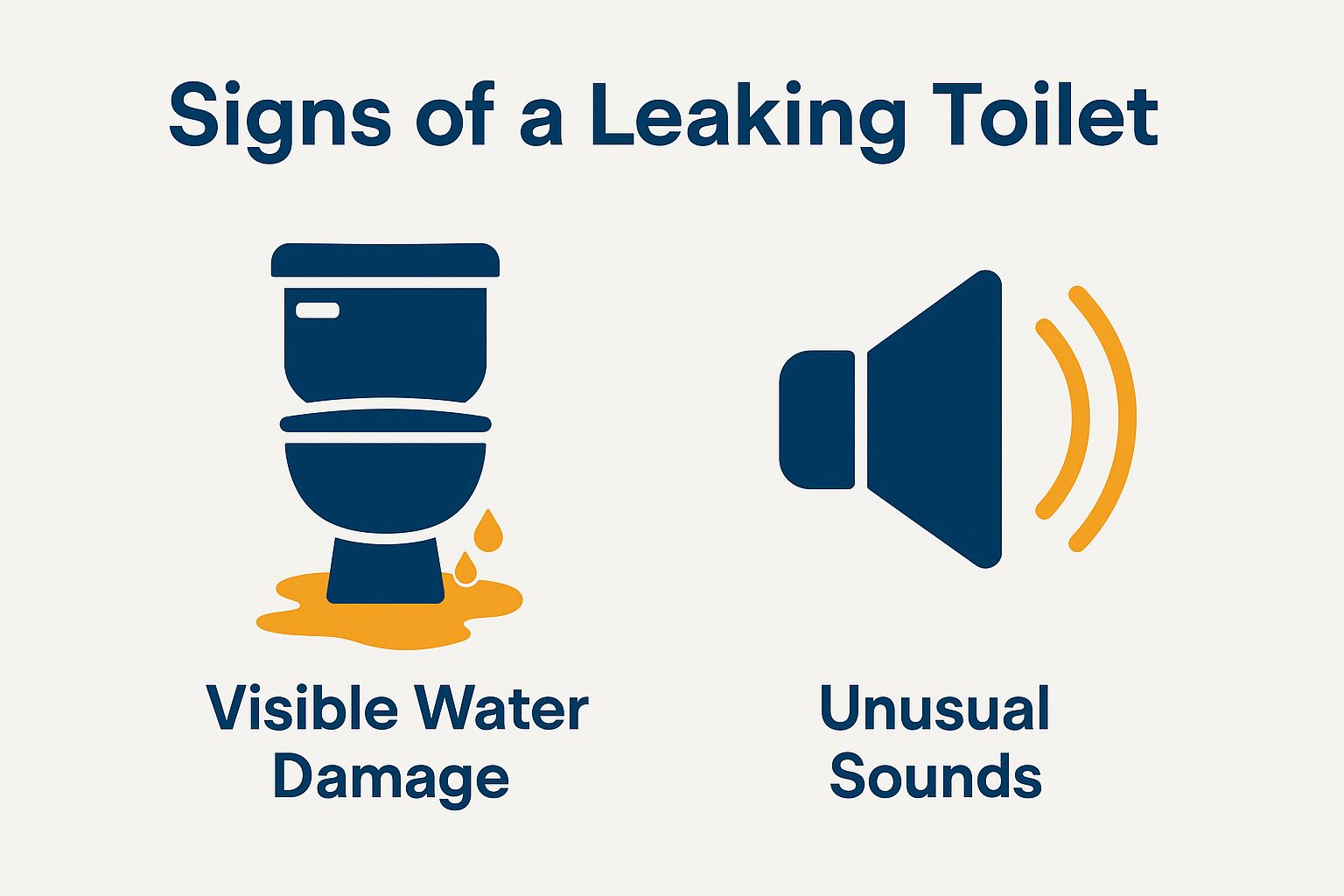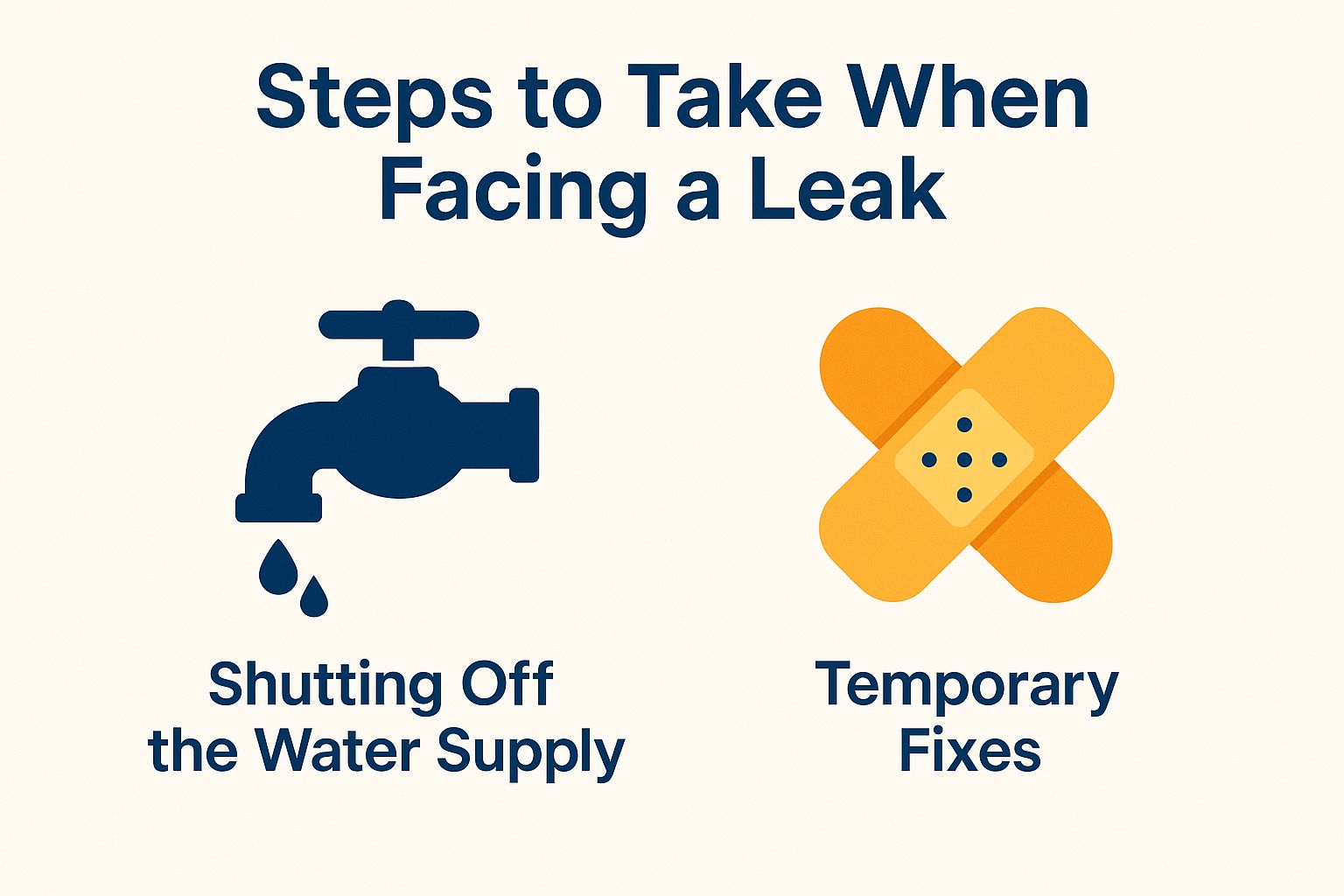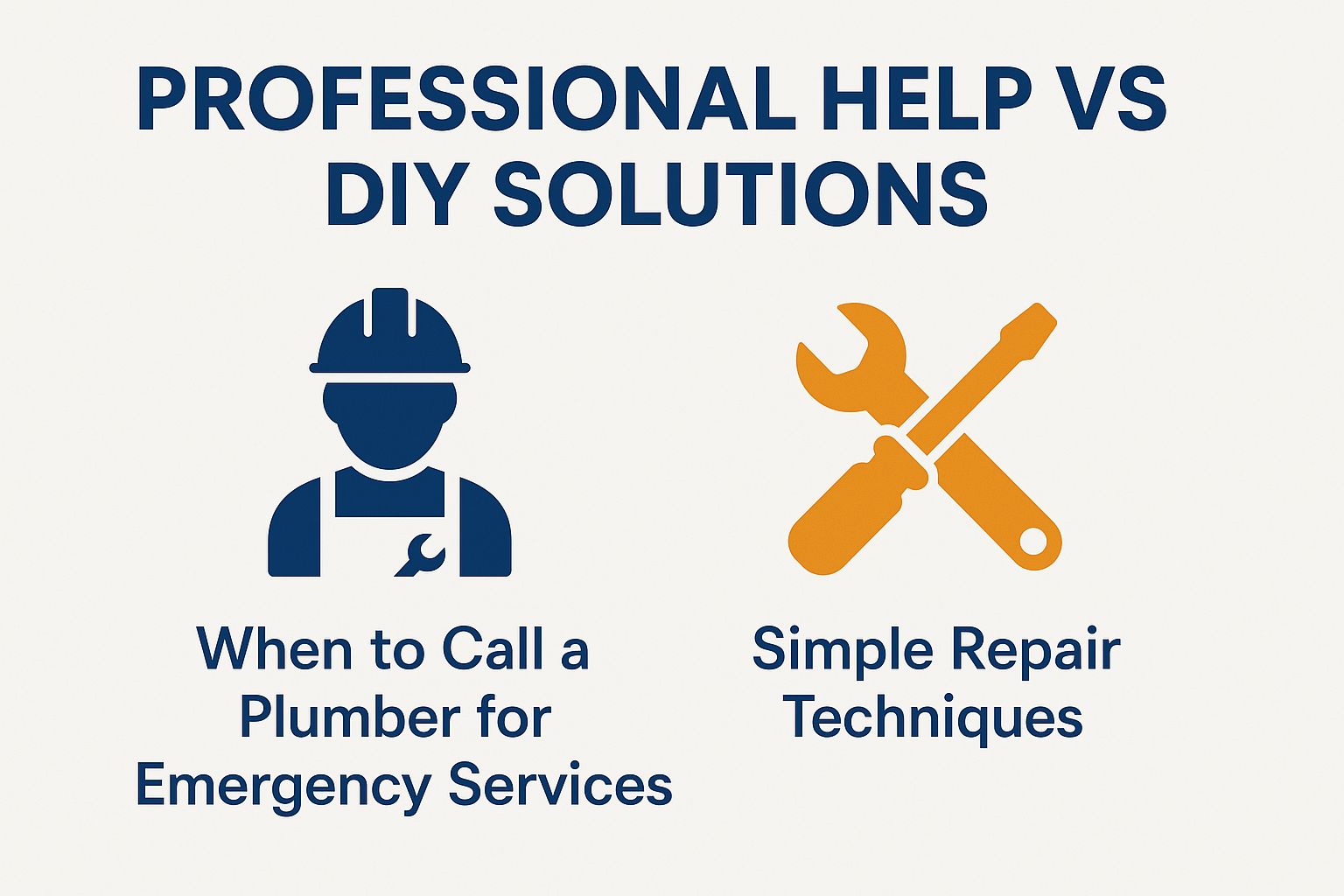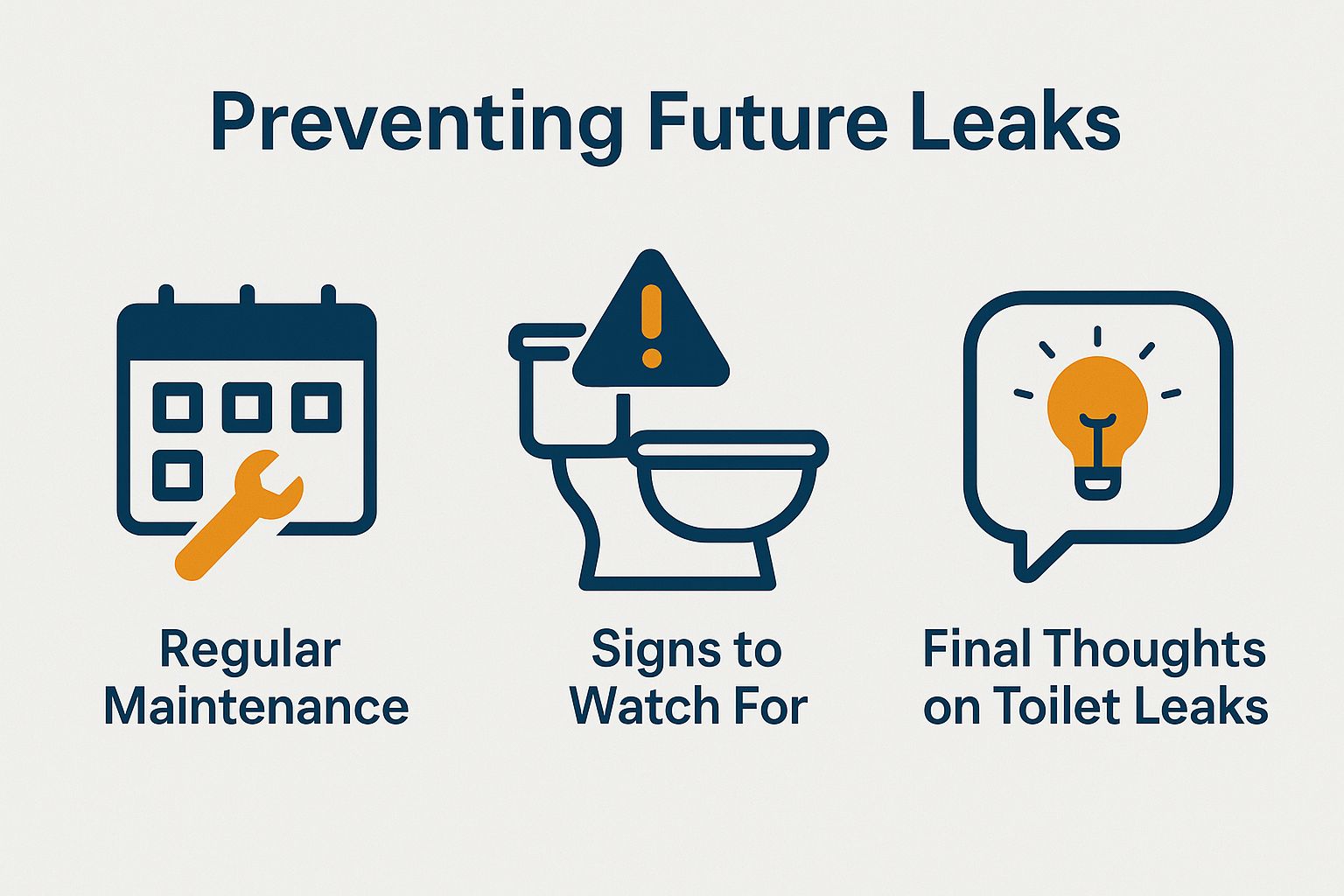
This article helps you determine whether a toilet leak is an emergency. Discover common causes and effective solutions.
Understanding the Problem
Understanding toilet leaks is essential for effective repairs and prevention.
Toilet leaks primarily come from two components: the wax ring and the water supply line. These parts are crucial for the plumbing fixture.
The wax ring, situated at the base of the toilet, forms a seal between the toilet and the floor. Over time, this seal may deteriorate, resulting in water seepage.
Concurrently, the water supply line may develop cracks or loose fittings, leading to leaks in the bathroom. Repair costs can vary from $150 to $300, significantly influenced by whether the wax ring or the supply line needs replacement.
Therefore, prompt leak detection is crucial to avoid bigger problems.
Common Causes of Leaks
Toilet leaks can occur for several reasons: a worn-out wax ring, poor installation, condensation, or natural wear. Each cause requires a specific repair method.
A failing wax ring may result in leaks at the base of the toilet, which typically requires professional help for replacement.
Cracked toilet tanks, often due to impacts or age, can lead to water seeping out, potentially causing damage to the flooring beneath.
Flange issues, frequently arising from rust or improper installation, can create instability, making it essential to realign or replace the flange. Aging plumbing fixtures may become corroded, thereby increasing the likelihood of leaks.
Regular maintenance checks help find these problems before they worsen.
Signs of a Leaking Toilet
Spotting leak signs early can save you from serious damage and expensive repairs.

Signs of Water Damage
Visible water damage, such as pooling water around the base of the toilet or discolored water areas on the bathroom flooring, serves as a clear indicator of a potential leak.
Check for these signs to evaluate damage:
- First, inspect for pooling water, which may suggest a faulty seal or a broken pipe.
- Second, examine the bathroom floor for stains, as these may indicate prolonged exposure to moisture.
- Assess the areas around the base for any signs of rot or mold growth, as these conditions can create an unhealthy environment and may deteriorate over time.
- Finally, utilize a moisture meter to measure moisture levels in the walls or floors, providing a more comprehensive understanding of the situation.
Unusual Sounds
Hissing or gurgling sounds from your toilet can signal plumbing problems and may require plumbing diagnosis to prevent leaks.
Document the noises to help identify the issue.
A hissing sound occurring during the tank filling process may indicate a leak at the fill valve; it is important to inspect the valve for any signs of wear or damage. Conversely, gurgling noises typically suggest that air is trapped within the pipes, which may point to a blockage; therefore, it is essential to examine the vent system for any potential clogs.
Additionally, if there is a constant flow of water without the act of flushing, this could indicate a malfunctioning flapper or valve. Prompt attention to these issues is crucial, as it can prevent the emergence of more significant plumbing problems in the future.
Assessing the Severity of the Leak
Assessing the severity of a toilet leak is essential for determining the appropriate response, whether it is a minor issue or a significant problem that requires immediate attention.
How to Tell Minor from Major Leaks
Homeowners must recognize the difference between minor and major leaks. This knowledge helps them decide when to seek professional help.
Minor leaks are slow drips or small puddles. They often show up as stains on walls or ceilings.
Homeowners can use DIY solutions like plumber’s tape or epoxy putty to fix these issues temporarily. Repair costs usually range from $50 to $150.
Conversely, major leaks are serious and include persistent dripping or large puddles. These require immediate help from professionals.
Regular maintenance checks help prevent these leaks from getting worse.
Potential Risks
Ignoring a leaking toilet can lead to serious issues, such as structural damage, mold growth, and increased utility bills.
Water damage can affect flooring, with repair costs sometimes exceeding $1,000. Additionally, mold growth introduces serious health hazards and may necessitate professional remediation, which typically costs around $2,000.
Failure to address leaks can also lead to substantial increases in utility bills; homeowners have reported monthly bill increases of up to 30% in certain cases.
To reduce these risks, homeowners should:
- Conduct regular inspections of toilets and the water supply line for leaks,
- Consider the implementation of moisture sensors to detect water issues promptly,
- Maintain a routine schedule for plumbing checks to prevent costly emergencies.
When to Treat a Toilet Leak as an Emergency
Some situations make a toilet leak a plumbing emergency. Addressing these quickly can prevent serious water damage and keep your home safe.
Immediate Water Damage Risks
Water damage from a leaking toilet can quickly lead to high repair costs and major disruptions.
- Check the subfloor for moisture. Unchecked leaks can cause rot and raise repair costs.
- Inspect the walls for signs of water damage. Repairing drywall can be expensive, especially if mold develops.
- Check the sewer line. Ongoing leaks may signal costly plumbing problems.
Addressing these issues immediately can prevent higher costs later. If there is any uncertainty, it is advisable to engage a professional to evaluate the situation and recommend the necessary repairs.
Health Hazards
Neglecting a leaking toilet can result in significant health hazards, including mold growth and compromised indoor air quality, thus emphasizing the need for plumbing expertise and reliable repairs.
Mold thrives in damp environments, making a leaking toilet an ideal breeding ground. To mitigate these risks, it is imperative to conduct a comprehensive plumbing diagnosis at the earliest opportunity.
- Begin by inspecting for visible leaks around the base of the toilet and the water supply line.
- Employ tools such as a moisture meter to identify hidden dampness within walls and floors.
In the presence of mold, it is advisable to engage a professional for remediation. Regular maintenance, which includes tightening fittings and replacing worn seals, can prevent future leaks and protect both health and the home environment.
Steps to Take When Facing a Leak
If there is a toilet leak, acting quickly on a toilet leak is vital. This helps reduce damage, lower repair costs, and keep your home safe while you find a lasting solution.

Shutting Off the Water Supply
The first step when handling a leaking toilet is to shut off the water supply. This prevents further damage and helps manage the situation.
To find the water supply valve, look behind the toilet near the wall. It’s usually a round or oval handle connected to a pipe.
To close the valve, turn the handle clockwise until it stops. This action halts the flow of water.
Knowing where the valve is located is essential. Quick action can prevent extensive water damage and costly repairs.
Check the valve regularly to ensure it works well and is accessible during emergencies. This practice promotes proactive home maintenance.
Temporary Fixes
Temporary fixes can help manage leaks until a professional can assess and repair the problem. This offers peace of mind.
For immediate relief, take these actions:
- Utilize towels to absorb excess water, as they are efficient at soaking up spills.
- Apply plumber’s tape around visible leaks to temporarily reduce dripping.
- Position a bucket beneath any leaking pipes to collect water, thus preventing further damage.
These solutions are temporary. Towels may saturate, plumber’s tape can fail, and buckets need regular emptying. Each of these measures is intended to minimize damage until a skilled plumber can address the situation appropriately.
Professional Help or DIY Solutions?
The decision to choose between professional assistance and do-it-yourself (DIY) solutions for toilet leaks can greatly influence the effectiveness of the repairs and the overall associated costs.

When to Call a Plumber for Emergency Services
Look for indicators that suggest you should contact a plumber, especially during plumbing emergencies.
Seek professional help if you notice significant leaks. These can cause extensive water damage. Additionally, the presence of mold growth near pipes may indicate moisture intrusion, which necessitates immediate attention. Unexplained increases in the water bill could also suggest a concealed leak, warranting further investigation.
Each of these issues can escalate quickly. It’s crucial to contact a plumbing professional to prevent costly repairs and ensure your home’s safety.
Simple Repair Techniques
For minor leaks, homeowners can effectively apply several straightforward repair techniques to avoid the need for extensive professional services.
- Replace the wax ring beneath the toilet.
You can usually complete these repairs in under an hour.
Preventing Future Leaks
Prevent future leaks by implementing regular maintenance and a proactive plumbing approach. This ensures your home stays intact.

Regular Maintenance Tips
Regular maintenance practices, such as inspecting water supply lines and replacing worn fixtures, can significantly mitigate the risk of toilet leaks. It is advisable to implement a routine that encompasses five critical maintenance activities:
- Periodic inspection of connections to identify potential leaks early;
- Replacement of wax rings every 5 to 10 years to ensure a proper seal;
- Regular cleaning to prevent mold buildup;
- Monitoring water pressure to help identify potential issues;
- Scheduling annual inspections with a professional to provide peace of mind.
Incorporating these practices into your home maintenance routine can extend your toilet’s lifespan and prevent costly repairs. This ensures your home’s safety.
Signs to Watch For:
Homeowners must watch for signs of wear and tear. This helps identify plumbing issues early and prevent leaks.
Regular inspections by professionals can help avoid costly repairs later.
Monitor water levels in the toilet tank. Irregular fluctuations may indicate a leaking flapper.
Check for moisture around the base of toilets or faucets. This can indicate hidden leaks.
Address these warning signs quickly. Simple fixes like replacing gaskets or tightening connections can save time and money.
Conclusion on Toilet Leaks
For recurring leaks or major plumbing issues, seek reliable repairs from experienced plumbers.
Proactive measures can enhance your plumbing. Regularly inspect your pipes for leaks, water stains, or corrosion.
Use a moisture meter to detect hidden leaks behind walls. For minor leaks, tools like a pipe wrench and plumber’s tape can suffice.
For extensive issues, contact local plumbers like Mr. Rooter Plumbing or Rare Breed Plumbing in Midvale, UT for expert solutions.


